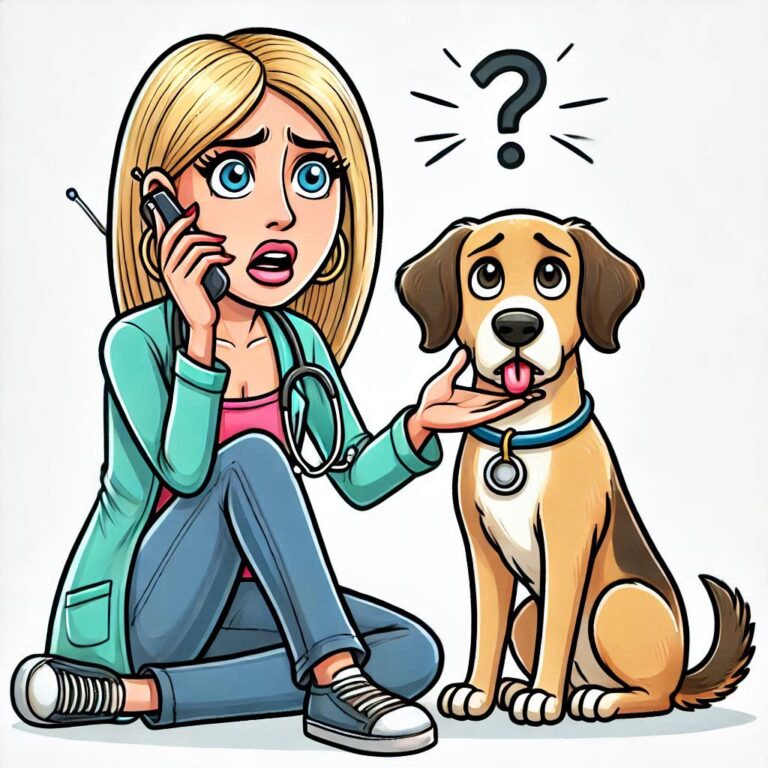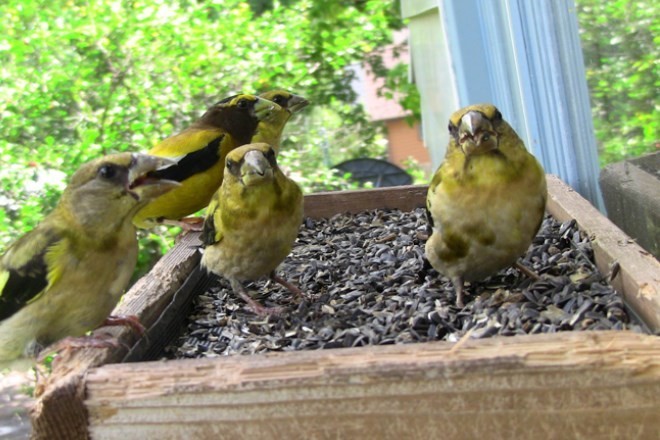What Are Worms in Dogs?
The Science Behind the Squirm
Worms in dogs are parasitic creatures—little freeloaders that live inside your dog’s body and steal their nutrients. Most dog worms live in the intestines, but some (like heartworms) go for the heart and lungs. The most common types are:
- Roundworms
- Hookworms
- Whipworms
- Tapeworms
- Heartworms
Each worm has its own life cycle, symptoms, and dangers. And while it’s no one’s favorite topic, understanding these critters is the first step toward protecting your dog.
“Intestinal worms are one of the most common health problems affecting dogs globally, and are a major concern for pet owners, veterinarians, and public health officials alike.”
— Companion Animal Parasite Council
How Do Dogs Get Worms?
All the Ways Dogs Pick Up Parasites
Dogs love to use their noses and mouths to explore the world. Unfortunately, this curiosity makes them easy targets for worms. Here’s a closer look at how the most common types of dog worms get inside your pup:
1. Contaminated Soil & Environment 🌱
Worm eggs and larvae can survive in soil for months or even years. Dogs get infected by:
- Sniffing, licking, or eating dirt or grass where infected animals have pooped
- Digging in contaminated soil (especially puppies—those little paws go everywhere!)
A 2023 study found that up to 20% of public parks have soil contaminated with parasite eggs. (Journal of Veterinary Parasitology)
2. Contact with Feces 💩
One of the main ways dogs get worms is through contact with infected poop—either by sniffing it, stepping in it, or, let’s be honest, sometimes eating it (coprophagia). Even a quick lick of the ground where another dog went potty can be enough!
3. Mother to Puppy Transmission 👩🍼
Puppies are especially vulnerable. Roundworms and hookworms can be passed from a mother dog to her pups:
- In utero: Some worm larvae can actually cross the placenta.
- Through nursing: Worm larvae can be present in the mother’s milk, infecting puppies as they eat.
That’s why vets recommend deworming puppies early and often.
4. Eating Infected Prey 🐀
Wildlife—like rodents, rabbits, birds, and even insects—can carry worm larvae. If your dog hunts, chases, or eats these animals, they might pick up a parasite buffet.
5. Fleas and Other Parasites 🦟
Fleas aren’t just itchy; they’re also tiny taxis for tapeworm eggs. If your dog swallows a flea (usually while scratching or grooming), those eggs are released in the gut. Tapeworm cycle—complete!
Ticks and mosquitoes also play a role: mosquitoes transmit heartworm larvae directly into the bloodstream.
“The tapeworm lifecycle requires an intermediate host, usually a flea, which is why controlling fleas is essential.”
— Merck Veterinary Manual
6. Grooming Themselves or Other Dogs 🧼
If a dog has worm eggs or larvae on their fur, paws, or anus, they can ingest them when they clean themselves. Dogs that play or sleep together can also share these unwanted guests.
7. Contaminated Water 💧
Drinking from puddles, streams, or shared water bowls at dog parks can expose your dog to parasite eggs or larvae.
Deep Dive: The Most Common Dog Worms
Let’s go a little deeper into each major type of worm, how they’re transmitted, and what they do to your dog.
Roundworms (Toxocara canis, Toxascaris leonina)
- How dogs get them: Eating eggs from contaminated soil, infected prey, or from their mother
- What they do: Live in the intestines, grow up to 7 inches long; puppies are most affected
- Symptoms: Pot-belly, vomiting (sometimes with worms in it), diarrhea, dull coat, poor growth
- Risks: Can be transmitted to humans, especially children
Hookworms (Ancylostoma caninum, Uncinaria stenocephala)
- How dogs get them: Ingesting larvae from soil or feces, or larvae burrowing through the skin
- What they do: Attach to the intestinal wall and suck blood; can cause severe anemia
- Symptoms: Weakness, pale gums, diarrhea, weight loss, bloody stool
- Risks: Can be deadly in puppies; can cause “creeping eruption” (skin infection) in humans
Whipworms (Trichuris vulpis)
- How dogs get them: Ingesting eggs from contaminated soil or feces
- What they do: Live in the large intestine, cause irritation and inflammation
- Symptoms: Chronic diarrhea (sometimes with mucus or blood), weight loss, lethargy
- Risks: Eggs can survive in soil for years
Tapeworms (Dipylidium caninum, Taenia spp.)
- How dogs get them: Swallowing infected fleas or eating infected prey
- What they do: Attach to the intestinal wall; body segments break off and exit with feces
- Symptoms: “Rice grain” segments around anus or in poop, scooting, mild digestive upset
- Risks: Humans can get tapeworms by swallowing infected fleas (rare)
Heartworms (Dirofilaria immitis)
- How dogs get them: Bite from an infected mosquito
- What they do: Grow in the heart and lungs; can lead to heart failure, lung disease, and death
- Symptoms: Coughing, fatigue, weight loss, breathing trouble; sometimes no symptoms until advanced
- Risks: Fatal if untreated; not transmitted to humans in the same way
How Do You Know If Your Dog Has Worms?
Common and Not-So-Common Symptoms
Worms are sneaky. Some dogs show lots of symptoms, others hardly any—especially early on. Here’s what to watch for:
Digestive Signs
- Diarrhea (sometimes with visible worms or blood)
- Vomiting (occasionally with worms present)
- Increased appetite or sudden weight loss
- Pot-bellied appearance (especially in puppies)
- Scooting or dragging their rear
Skin and Coat Changes
- Dull, dry, or scruffy fur
- Itching, licking, or biting around the tail or anus
- Visible worm segments (tapeworms) stuck to fur
Energy and Behavior
- Lethargy or reduced playfulness
- Weakness or pale gums (signs of anemia, especially with hookworms)
- Stunted growth in puppies
Other Signs
- Coughing or breathing trouble (possible heartworms)
- Seizures (rare, but can happen with severe infection)
“Many dogs with intestinal parasites show no outward signs at all, which is why routine veterinary checks and stool tests are so important.”
— PetMD
Can Humans Get Worms from Dogs?
Zoonotic Risks and How to Stay Safe
Yes—some dog worms can infect humans, especially children, the elderly, or people with compromised immune systems. This is known as zoonosis.
How Humans Get Worms from Dogs
- Accidentally ingesting dirt or dust contaminated with worm eggs (kids playing outside, gardeners, etc.)
- Poor hygiene after handling dog poop or contaminated soil
- Direct contact with infected dog fur or surfaces
Risks to Humans
- Roundworms: Can cause “visceral larva migrans”—larvae migrate to organs, potentially causing serious illness
- Hookworms: Larvae can burrow into skin, causing rashes (“cutaneous larva migrans”)
- Tapeworms: Very rarely, humans can get tapeworms from ingesting infected fleas
Preventing zoonotic infection:
- Pick up pet waste promptly (and wash your hands!)
- Wash hands after outdoor play, gardening, or handling pets
- Teach kids not to eat dirt or put hands in their mouths after playing with dogs
“Pet owners can greatly reduce the risk of zoonotic disease by practicing good hygiene and regular veterinary care for their animals.”
— CDC
Diagnosing Worms in Dogs
What to Expect at the Vet
If you suspect your dog has worms, your veterinarian will ask for a fresh stool sample. Here’s how the process works:
- Microscopic Exam: The vet looks for worm eggs, larvae, or segments in the poop using a special floatation test.
- Blood Test: For heartworms, a blood test is needed to detect larvae or adult worms.
- Additional Testing: If your dog has chronic diarrhea or other unexplained symptoms, your vet may run additional tests (like PCR or antigen testing).
How often should you get your dog’s stool checked?
Puppies: At least 2-4 times in their first year
Adults: 1-2 times per year (more if they’re at high risk)
How to Treat Worms in Dogs
Deworming Medications and Home Care
The good news: Most worm infections are easy to treat—if you catch them early.
Veterinary Dewormers
- Prescription-only dewormers are the most effective. These come as pills, liquids, chewables, or topicals.
- The type and length of treatment depends on the worm species.
- Tapeworm treatment must include flea control at the same time.
- Never use human dewormers or random over-the-counter products without veterinary advice.
Follow-Up Care
- Repeat treatments may be needed to kill newly hatched worms.
- Clean up poop immediately and wash all bedding and toys.
- Keep your dog away from high-risk areas during treatment.
Natural Remedies: Do They Work?
Many pet parents ask about home remedies, like pumpkin seeds, garlic, or coconut oil. While some might have mild anti-parasitic effects, they’re not a substitute for proven veterinary medications. Home remedies are best used as supportive measures after talking to your vet.
“While some natural products can help support digestive health, there’s no substitute for prescription dewormers when it comes to treating active infections.”
— American Kennel Club
How to Prevent Worms in Dogs
A Step-by-Step Guide for Dog Parents
Prevention is always easier than treatment! Here’s how to keep your dog worm-free:
1. Routine Deworming
- Puppies: Every 2 weeks until 12 weeks old, then monthly until 6 months
- Adults: Every 3 months (or monthly for high-risk dogs)
- Nursing mothers: Deworm at the same time as their puppies
2. Year-Round Parasite Control
- Flea & tick prevention (essential for tapeworm, Lyme, and other diseases)
- Heartworm preventative (especially in mosquito-prone areas)
3. Clean Up After Your Dog
- Pick up poop promptly—every time, everywhere
- Don’t let your dog eat or sniff unknown poop at parks or on walks
4. Limit Hunting, Scavenging, and Roaming
- Don’t let your dog eat wildlife, garbage, or dead animals
- Supervise outdoor play; keep dogs on-leash or in fenced yards
5. Practice Good Hygiene at Home
- Wash your hands after handling dogs, playing outside, or gardening
- Wash your dog’s paws and fur if they get dirty
- Regularly clean bedding, toys, and food bowls
6. Vet Visits and Annual Checkups
- Annual stool checks and heartworm tests
- Discuss deworming and preventive care with your vet
“Even indoor dogs can get worms, since parasite eggs can be brought in on shoes or other pets. Year-round prevention is key for all dogs.”
— VCA Animal Hospitals
Frequently Asked Questions About Worms in Dogs 🐾
Can dogs get worms from eating grass?
Not directly from the grass itself, but if the grass is contaminated with worm eggs or larvae (from other animals’ poop), then yes.
How long after deworming will worms leave my dog’s body?
You might see worms in your dog’s poop for a few days after treatment. Most medications work within 24-72 hours, but follow-up treatments may be needed.
Can I get worms from letting my dog lick my face?
It’s unlikely, but not impossible, especially if your dog is infected and has recently licked their own anus or contaminated fur. Always practice good hygiene!
Do indoor dogs need deworming?
Absolutely! Parasite eggs can be tracked indoors on shoes, paws, or even by other pets.
Will my dog always show symptoms if they have worms?
Nope! Many dogs show zero signs, which is why regular vet checks and preventative care are so important.
Real Stories from the Internet: What Other Dog Parents Say
“I was shocked when my vet told me my indoor-only dog had worms. Turns out, I’d tracked parasite eggs in on my shoes from the dog park!”
— Megan, via Reddit
“We took in a rescue pup who was so bloated. After a few rounds of dewormer, she’s a whole new dog—happy, playful, and full of energy!”
— @dogmomloves via Instagram
“I thought my dog’s scooting was just a funny quirk, but my vet found tapeworms. Now I’m a poop-pickup ninja!”
— Brian S., via Dog Forum
Final Thoughts: Love Your Dog, Protect Their Health! 🐾
Worms are common, but they don’t have to be scary or inevitable. With a little knowledge, regular prevention, and a lot of love, you can keep your dog safe from these pesky parasites.
Remember, you’re not alone—millions of dog parents deal with worms every year. The key is to be proactive, partner with your vet, and never hesitate to ask questions or seek help. Your dog’s wagging tail and happy heart are worth every effort! 🥰
If you’ve got tips, questions, or your own worm-fighting stories, share them with us at DoggieJoy.com. We’re all about keeping dogs healthy, happy, and ready for their next adventure by your side. 🐕💖
Now, go give your pup a cuddle—and maybe a treat for being such a good dog! 🦴✨








